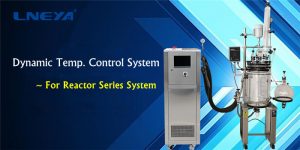What are the power test systems for new energy car batteries?
The LNEYA power battery system is tested for battery testing of new energy vehicles, but modern new energy vehicles have many types of batteries. So what are the characteristics?
The ternary lithium battery refers to a lithium battery in which the positive electrode material is a lithium nickel cobalt manganese ternary positive electrode material. Compared with the lithium cobalt oxide battery, the ternary lithium battery has higher safety and is more suitable for the development trend of new energy vehicle batteries in the future. In the northern weather, the battery is more stable at low temperatures, but the voltage is too low, and the energy density is between the lithium iron phosphate battery and the lithium cobalt oxide battery. The representative models are: China Beiqi New Energy EV200, Beiqi New Energy EU260, Tesla Model 3 Wait.
Nickel-metal hydride batteries are synthesized from hydrogen ions and metallic nickel. The battery has a large energy reserve, lighter weight, longer service life and less environmental pollution. However, the power battery system test reminds that the manufacturing cost is too high, and the performance is worse than the “lithium battery”. Among them, the representative models are: Toyota prius, Ford Escape, etc.
Lithium cobaltate battery is a common battery in electronic products. It is commonly used in laptop batteries. It is used as a battery core. It has mature production technology and high energy ratio. The energy ratio is about twice that of lithium iron phosphate battery, but at high temperature. The stability is slightly worse than the nickel-cobalt-manganese-lithium battery and the lithium iron phosphate battery. The representative models are: Tesla.

The lithium iron phosphate battery is a lithium ion battery using lithium iron phosphate as a positive electrode material. (The positive electrode materials of lithium ion batteries mainly include lithium cobaltate, lithium manganate, lithium nickelate, ternary materials and lithium iron phosphate, etc.), and the stability is currently better in lithium batteries for vehicles. However, the energy density is still not much smaller than that of the ternary lithium battery and the lithium cobalt oxide battery, and the charging efficiency is lowered when the temperature is lower than -5 °C. And if the temperature is too low, it will affect the capacitance of the battery. The model of lithium iron phosphate battery is not suitable for driving in the north, especially in the extreme cold areas such as the northeast, because the temperature in winter is too low, which will affect the service life of lithium iron phosphate battery. The representative models are: China BYD e6 , BYD Qin, BYD Tang and so on.
Graphene battery, also known as black gold: is a new energy battery developed by adding graphene to a lithium battery. Graphene batteries are generally used in aerospace and other fields. This new energy battery can compress hours of charging time to less than one minute. Since graphene is added to the lithium battery, the lithium battery can reduce the heat in the production capacity, thereby reducing the energy loss, avoiding a large amount of energy being wasted, reducing the damage of the heat to the battery, and improving the service life of the battery. Battery costs are too expensive to be used on a large scale.
There are many types of power batteries for new energy vehicles. In order to ensure the operating efficiency of new energy batteries, battery system testing needs to be carefully selected.
Related recommendations
-
Detailed description of piping of refrigeration and heating cycle equipment
1734When the refrigeration and heating cycle equipment is in operation, the user will find that whether or not the fully enclosed pipeline affects the overall performance. The LNEYA refrigeration and heating cycle equipment adopts a fully enclosed cyc...
View details -
Installation method of heating and cooling temperature control system for automobile motor
1604In chemical and pharmaceutical, chemical laboratories, pilot plants and other industrial processes, the heating and cooling temperature control system is the most used equipment for temperature control in chemical manufacturing, so a highly dynami...
View details -
Maintenance Method of Condenser in Water Chiller Units
1699Air-cooled condenser is mainly used in air-cooled water chillers. It uses air as cooling medium. Because there are often dust or other sundries in the air, some of these dust or sundries will fall on the outside surface of the condenser fins. Over...
View details -
How to Control Static Electricity in Ultra-Low Temperature Test Chamber?
1527When using the ultra-low temperature test chamber, in order not to affect the quality of it, we need to better control static electricity. So how to control static electricity in Wuxi crown sub-cryogenic test chamber?Static electricity in the ultr...
View details
 LNEYA Industrial Chillers Manufacturer Supplier
LNEYA Industrial Chillers Manufacturer Supplier












